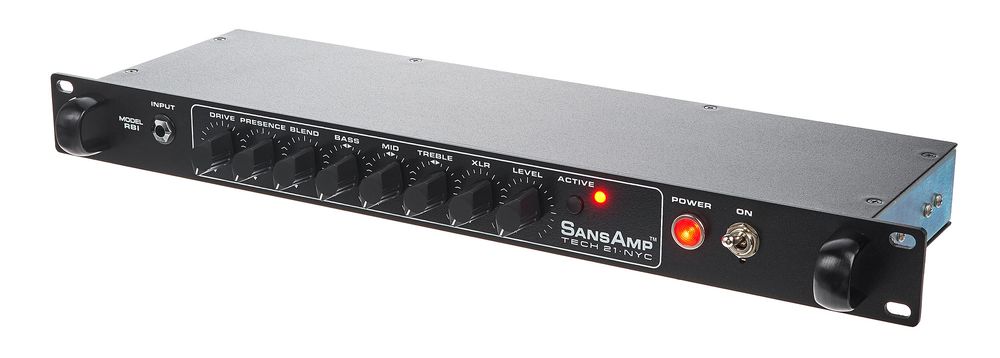10. Alternative Methods
Using a good microphone to record your amp is generally the top-notch way to get that ultimate guitar sound, but it’s also the most time-consuming and noisy, especially for your neighbors. That's why there are several alternatives now, quicker and/or less noisy, that can still yield great results.
However, most devices can't fully replicate the interaction between an amp (especially a tube amp) and its speaker. That's because speakers generate their own resonances at high volumes, causing jumps in the power stage, and that's what makes the sound ;-).
Direct Box / Recording Output on the Amp
Electric basses are often recorded using a DI box. It's not as straightforward with guitars, especially with distorted sounds. The speaker plays a massive role in the guitar sound. A typical guitar speaker cuts off at around 7 kHz. It's essential because without this high-end cutoff, even a fine Mesa Boogie can sound like a nasty circular saw. For clean sounds, you might not necessarily need this frequency cut, but most of the time, it still sounds rounder and more harmonious when the highs are capped.

Item No. 313198 - Hughes & Kettner Red Box, Item No. 152910 Behringer GI100 Ultra-G
Some time ago, various manufacturers integrated speaker simulation into a DI box. Two of the most famous examples are the Hughes & Kettner Red Box and the Behringer Ultra GI-100.
Some guitar amps come factory-equipped with a recording output featuring speaker-like frequency correction – often evident from the output's name. Direct recording with speaker simulation sounds decent, but a well-mic'd amp sounds significantly better. Some high-end guitar amplifiers use special preamps for the recording output (more on that below). Then there are the modeling amps – compact combos or amp heads with amp simulation. These devices are used in professional studios, especially when time is of the essence. A good modeler sounds better than a poorly mic'd amp.
Remember, tube amps must not be run without a speaker connected. The power stage would suffer damage. If you want to lower the volume without turning down the master volume (because, let's face it, the power stage rumble at full blast sounds awesome), you'll need a "Power Attenuator" that converts power stage output into heat.

Item No. 464530 - Tone King Ironman II Attenuator
Recording Preamps
For a better sound than an amp with a frequency-corrected DI box, you can opt for a guitar preamp specifically designed for recording purposes. Renowned examples include the Hughes & Kettner Tubeman or various models from Tech 21/SansAmp. Many users swear by these units. Also, the venerable Tom Scholz Rockman falls into this category, although its very distinctive Rockman sound might not entirely suit current tastes. If you're into classic '80s rock, it's worth giving it a try.

Item No. 173745 - Tech 21 SansAmp RBI





